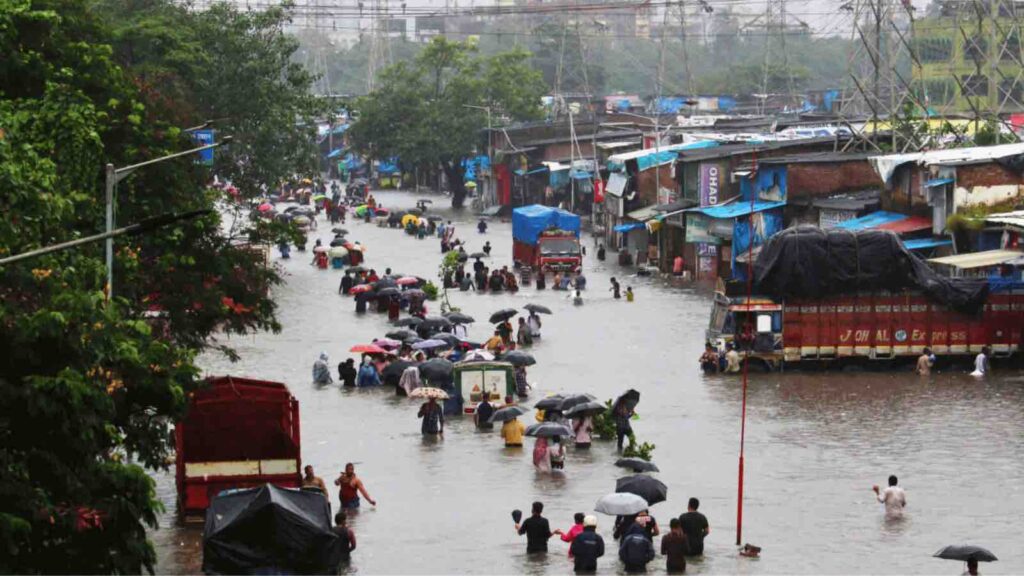With intensifying global heatwaves, reinforcing the importance of climate resilience in Indonesia and across the Asia-Pacific region.
Bracing for a new climate reality, the United Nations issued a grave warning on Tuesday about an anticipated surge in the intensity of heatwaves, as various regions spanning the Northern Hemisphere continue to grapple with scorching temperatures. The caution serves as a stark reminder of the escalating impacts of climate change.
RELEVANT SUSTAINABLE GOALS


Heightened Heatwaves Across The Globe
John Nairn, a senior extreme heat advisor at the UN’s World Meteorological Organization (WMO), urged for enhanced global preparedness as he forecasted an upsurge in the severity of these heat events. He expressed, “These events will continue to grow in intensity, and the world needs to prepare for more intense heatwaves.”
Heatwaves rank among the deadliest of natural hazards, claiming hundreds of thousands of lives each year due to preventable heat-related illnesses. Nairn emphasized the rapidly expanding health risks associated with these climatic events, brought on by increased urbanization, rising temperature extremes, and aging populations.
This trend shows no signs of decreasing
John Nairn (senior extreme heat advisor at the UN's World Meteorological Organization, WMO)
In the near future, the recently declared El Nino—a climate pattern characterized by irregularly occurring warming episodes that surface every two to seven years—could exacerbate these heat events, according to Nairn. Regardless of El Nino’s influence, the surge in simultaneous heatwaves in the Northern Hemisphere—jumping six-fold since the 1980s—signifies a clear, disturbing trend.
“This trend shows no signs of decreasing,” Nairn stated, drawing attention to the “quite serious impacts on human health and livelihoods” associated with escalating heatwaves.
Europe, the fastest-warming continent globally, braces itself as scorching temperatures threaten to reach record highs in Italy’s Sicily and Sardinia islands. There are rising concerns over the persistent high night-time temperatures, a dangerous condition that inhibits the human body from recovering from sustained heat exposure, leading to increased heart attack cases and fatalities.
The WMO currently seeks to develop a unified heatwave intensity categorization system to standardize impact forecasts and warnings worldwide. With human-induced climate change amplifying heatwaves, leading to higher temperatures and prolonged hot weather systems, Nairn’s advice for tackling the crisis is succinct: “Stop carbon fuels; just electrify everything.”
Intensifying Heatwaves in Asia: Broad Impacts and Concerns
As heatwaves around the globe continue to intensify, Asian countries, known for their diverse ecosystems and climates, are facing unique and wide-ranging challenges. In many of these countries, agriculture forms the backbone of the economy, and heatwaves threaten to disrupt this critical sector severely.
In the vast and populous countries of India and China, heatwaves can reduce crop yields drastically, leading to food insecurity and destabilizing local economies. Heat stress also jeopardizes the health and livelihoods of outdoor workers, particularly in sectors such as agriculture and construction, contributing to increasing health care costs and reduced productivity.
Countries like Indonesia and the Philippines, with their tropical climates and numerous islands, face heightened risks from rising sea levels and intensified weather events, including typhoons and cyclones, exacerbated by the heatwaves. As mentioned earlier, phenomena like El Nino and the Indian Ocean Dipole can cause extreme weather patterns, influencing the rainfall and the health of critical marine ecosystems like coral reefs, crucial for fisheries and tourism.
In Central Asia, from Kazakhstan to Mongolia, heatwaves can lead to water scarcity, affecting not only the human populations but also the region’s unique wildlife, contributing to ecological imbalances.
The sprawling urban metropolises of Asia, from Tokyo to Jakarta, also face the urban heat island effect, where concrete structures and lack of green spaces cause cities to become significantly warmer than surrounding rural areas. This effect can exacerbate heatwave conditions, leading to health problems among the urban population and increasing energy consumption due to higher demands for cooling.
Heatwaves also exacerbate water scarcity issues in regions such as the Middle East and parts of South Asia. The increasing evaporation rates due to higher temperatures can deplete water resources, affecting everything from drinking water supplies to energy production in hydroelectric plants.
As a continent, Asia is diverse, but it is clear that the effects of intensifying heatwaves can be felt across its breadth. From food security to water scarcity, from urban heat islands to disrupted ecosystems, the intensifying heatwaves are a climate challenge that Asia must prepare for. The urgency to build climate resilience has never been more significant as the region braces for the impact of a warmer future.
Lead image courtesy of Marc Bruxelle from Getty Images.
You may also be interested in :
Green Revolution In Asia : Transitioning Towards A Sustainable Future




